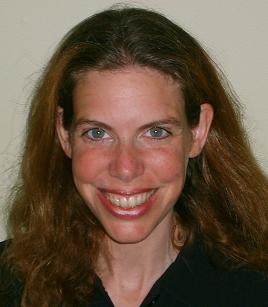| Teaching for Civic Engagement: Background and Overview |
![PDF-NOTE: Internet Explorer Users, right click the PDF Icon and choose [save target as] if you are experiencing problems with clicking.](http://rsnonline.org/templates/rsntemplate-smallmasthead/images/pdf_button.png) |
 |
Issue Editors: Ellen Posman, Baldwin-Wallace College, and Reid B. Locklin, University of Toronto
Contemporary conversations in higher education often draw attention to the important public role played by colleges and universities in fostering students’ critical thinking as future citizens, providing public spaces for open discussion and exchange of ideas, and promoting civic engagement through activist pedagogies and/or service-learning. As well, a significant body of recent scholarship in religious studies has turned a searching eye on well-worn truisms about secularism and democracy, on the revitalization of religious discourses in the public sphere, and on the political implications of the academic discipline itself. Intended in part to join these broader conversations at a concrete level, the Wabash Center for Teaching and Learning in Theology and Religion funded a 2008–2009 grant project on the topic, “Pedagogies for Civic Engagement in Religious Studies.” The grant involved fourteen participants, including both of the current coeditors of Spotlight on Teaching. These participants agreed to experiment with different teaching strategies in different types of classes at a broad range of institutions, all designed to foster one or another form of “civic engagement,” broadly defined. The teaching strategies highlighted in the grant project ranged widely, from in-class assignments to out-of-class experiences. For some, being engaged in the civic sphere meant thinking about what it means to be a good citizen and looking at models of citizenship from diverse cultures and religious viewpoints. For others, it meant opening the newspaper not only to become aware of the world around us and to see how much religion is intertwined with civic life, but also to examine the media’s role in shaping cultural assumptions about religion and community. For still others, civic engagement meant direct political involvement, encouraging a critical examination of religion in local, national, and/or global politics that opens into one or another form of activism. And for some, an essential part of civic engagement meant getting students out of the classroom to cross boundaries and to upset their assumptions about the civic community itself. This could be via field trips for dialogue with members of diverse religious groups, community service projects, or a wide range of other experiences that involved learning from and/or educating distinct constituencies within the broader society. The five articles in this issue of Spotlight on Teaching continue this conversation, on a somewhat different basis. Four of the authors — Swasti Bhattacharyya, Marianne Delaporte, Hans Wiersma, and Phil Wingeier-Rayo — were participants in the Wabash grant project, and for the most part their essays address the strategies they developed or refined in connection with this project. To this group we have solicited two additional contributions: Rebekka King highlights her work with the innovative course “Religion and the City,” offered in connection with the Religion in the Public Sphere initiative at the University of Toronto, while Bobbi Patterson, recipient of the 2010 AAR Excellence in Teaching Award, offers her reflections on more than a decade of work with community-based learning at Emory University. Teaching for Civic Engagement: Shared Themes, Diverse Practices, and UnderstandingThere is, of course, no single, shared understanding of “civic engagement” as such reflected in these articles. Indeed, this diversity stems in part from diverse understandings of civic community itself. Patterson and King rely on in-class readings to build such an understanding, whether this involves more theoretical understandings of the nature of community and community-building itself (Patterson) or notions of meaning-making and civic sacred spaces and how those spaces reveal underlying tensions among interest groups within a city (King). Bhattacharyya’s ethics class invites students to reflect on what it means to be a moral person and a good citizen, just as Wiersma’s “Life and Work of the Church” course invites students to think about the virtue of hospitality in a pluralistic society. And Wingeier-Rayo narrows the focus to various service-learning projects in Cuba, but utilizes such projects to engage students in a discussion of their own society as well as of societal obligations and public policy. Each of the articles suggests that authentic civic engagement requires students and teachers to transgress the boundaries of the traditional classroom. This can, again, happen in a variety of different ways: through a modified field trip and dialogue assignment to better understand a particular religious group (Delaporte and Wiersma); a field trip and extended project to discover particular constituencies’ uses of urban sacred spaces (King); or creative group projects designed to educate the broader society about one or another ethical issue (Bhattacaryya). Above and beyond such engagement at a street level, Delaporte’s project in particular involves a critical examination of media sources in order to expose the dissonance between popular representation and first-hand experiences in the case of lesser known or marginal Christian groups. Finally, while two of the articles here involve service-learning projects in their teaching strategies (Wingeier-Rayo and Patterson), neither considers the service itself as the primary form of civic engagement. For Wingeier-Rayo, the international service trip to Cuba serves to educate the students about a foreign policy issue, but the actual engagement involves educating the community or contacting a member of Congress about the issue. For Patterson, the service provides an experience through which to discuss theoretical views about service, the nature of community, and the ongoing development of effective partnerships. Despite the diversity of approaches represented in this issue — or, perhaps, because of it — the articles illustrate well the distinctive contribution of religious studies courses to fostering civic engagement in higher education. Our field, as with many liberal arts disciplines, thrives on complexity, deals directly with theories of community, and has a long history of social responsibility. Students in the courses described in this issue are pushed to consider complex issues and theories, as well as diverse perspectives. Yet, the study of religion also tends to implicate students in a more self-reflective process than many other academic disciplines; Patterson in particular notes the role contemplation may play as we consider civic engagement. All of the articles engage students in the process of transforming their own thinking and considering the forces at work upon their roles and views. Empathetic accountability and the engagement of religious and cultural pluralism take a central role, as students engage in dialogue with more marginal or simply “other” constituencies to understand diverse perspectives and put faces and voices to particular issues. And, in these cases, students are asked — or in some cases required — to act: to serve, to write, to partner with, to educate. Teaching for Civic Engagement: Concerns and ComplicationsThe authors here also look to the future direction of these kinds of strategies and methods in religious studies. All point to the need to integrate experiential learning fully into their courses, and some point to a need to integrate experiences across the campus. Both Wingeier-Rayo and Patterson move farther, pointing to growing interconnections between local and global issues, and widening a traditional understanding of civic engagement. Patterson notes, “Following the threads from global to local, from interdisciplinary resources to transdisciplinary courage, we are facing a new crossroad that will energize our engaged teaching, learning, and scholarship.” She imagines long-term possibilities and asks long-range questions. Yet, the long-term effects are unclear. An underlying concern of a number of these authors boils down to this: how do we make students care about questions of civic engagement? Will a deep understanding of community issues combined with self-reflection about one’s location actually lead students to invest personally and to take action? Will requiring students to meet people they might otherwise not meet, or to engage in civic action, generate habits that extend beyond the final integration paper or cumulative exam? These questions are posed with special force by Wingeier-Rayo and Bhattacharyya. Bhattacharyya wonders whether her students may be “simply going through the motions and not really trying to engage a topic of interest to them and their selected community; if so, would it really ‘count’ as civic engagement?” Wingeier-Rayo, for his part, echoes this concern: “If [civic engagement] is enforced as part of the course (read coerced), then have I accomplished the learning objective of civic engagement or simply exerted power over students to fulfill an assignment? This leads to a larger service-learning question: ‘how can we assess the learning outcome of civic engagement if it is required as part of a course?’” Also implicit are questions about the role of the instructor. Delaporte and Wiersma note the added work it takes to manage the logistics of off-campus learning opportunities, and Wingeier-Rayo reveals how these logistics become amplified when one moves not merely off-campus but across national borders. Bhattacharyya wonders about sacrificing course content to promote engaged pedagogy, and both Bhattacharyya and Patterson discuss the feelings of discomfort that arise — both for students and faculty — in the process of transformational learning that challenges deeply held assumptions. King, finally, poses searching questions about the inherent bias of her own pedagogical methods, expressing concern that these pedagogical practices “might be deemed ideological or values-driven.” Perhaps it is fair to say that genuine civic engagement implies some element of risk, as we push beyond our comfort zones, and these risks are as real for the instructor as for the student. With this risk, however, also comes the opportunity to generate transformational learning opportunities and to take up the challenge of fostering a more robust public role for our universities and our disciplines. |
 Spotlight on Teaching
Spotlight on Teaching
 Ellen Posman is an associate professor of religion at Baldwin-Wallace College in Berea, Ohio. She holds degrees in religious studies from Stanford University, Harvard University, and the University of California, Santa Barbara. Her expertise lies in the area of comparative religion, with specializations in Buddhism and Judaism. Posman can be reached at
Ellen Posman is an associate professor of religion at Baldwin-Wallace College in Berea, Ohio. She holds degrees in religious studies from Stanford University, Harvard University, and the University of California, Santa Barbara. Her expertise lies in the area of comparative religion, with specializations in Buddhism and Judaism. Posman can be reached at  Reid B. Locklin holds a joint appointment in Christianity and culture at Saint Michael’s College and at the Centre for the Study of Religion, both at the University of Toronto. A graduate of Boston University and Boston College, he is the author of Spiritual but Not Religious? (Liturgical Press, 2005) and other works in comparative theology, Christian ecclesiology, and spirituality. Locklin currently serves as president of the Society for Hindu–Christian Studies and as cochair of the AAR’s Comparative Theology Group. He can be reached at
Reid B. Locklin holds a joint appointment in Christianity and culture at Saint Michael’s College and at the Centre for the Study of Religion, both at the University of Toronto. A graduate of Boston University and Boston College, he is the author of Spiritual but Not Religious? (Liturgical Press, 2005) and other works in comparative theology, Christian ecclesiology, and spirituality. Locklin currently serves as president of the Society for Hindu–Christian Studies and as cochair of the AAR’s Comparative Theology Group. He can be reached at 